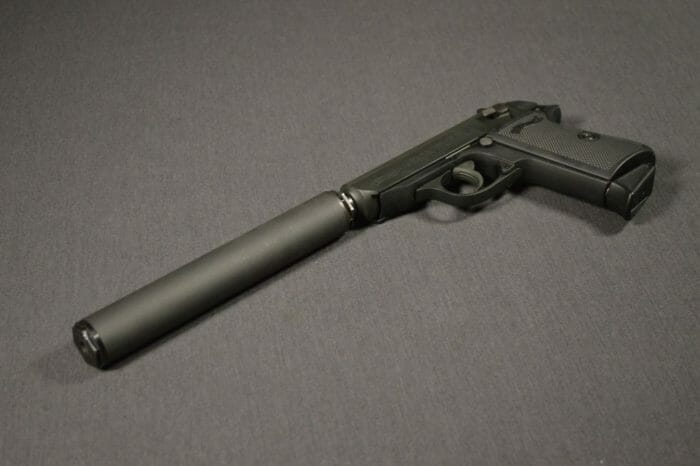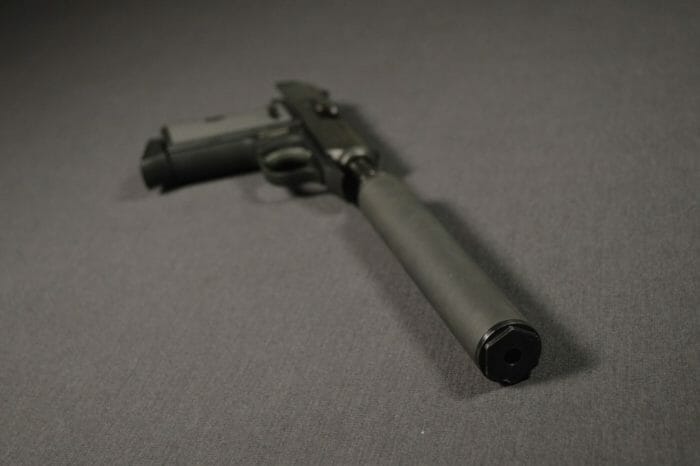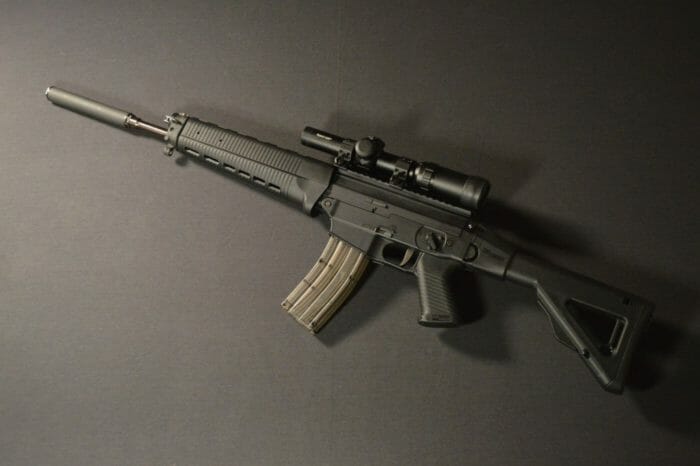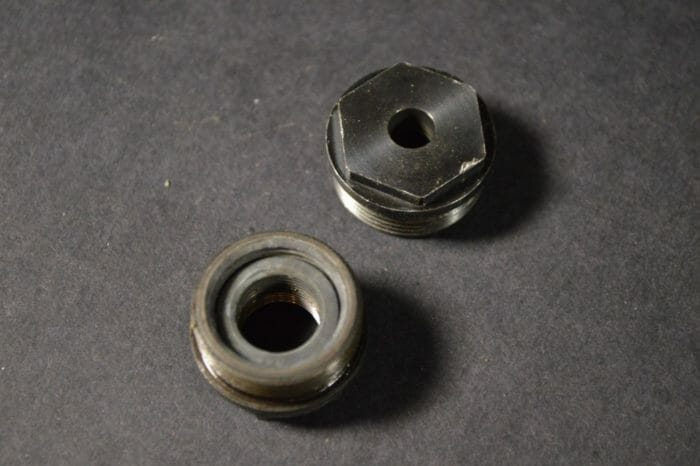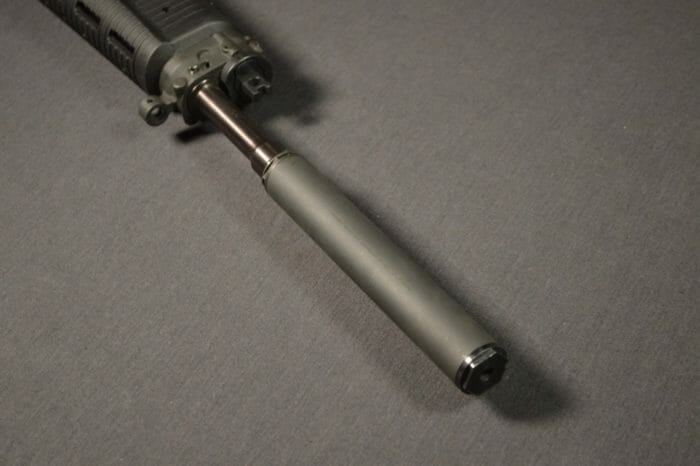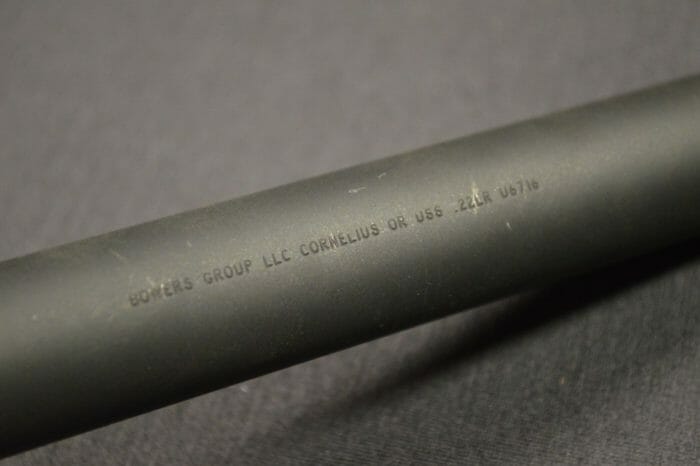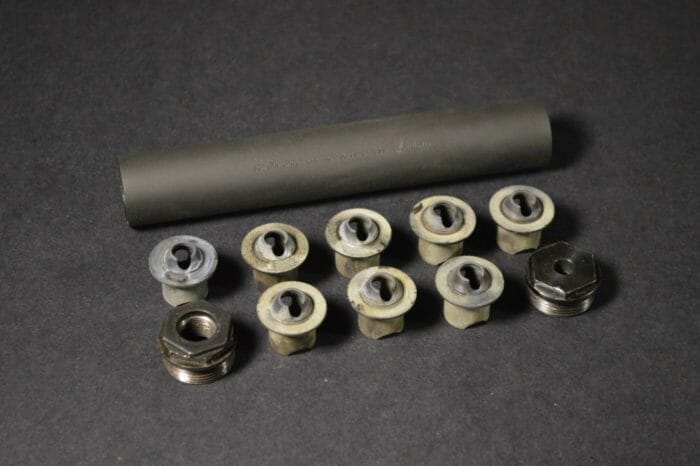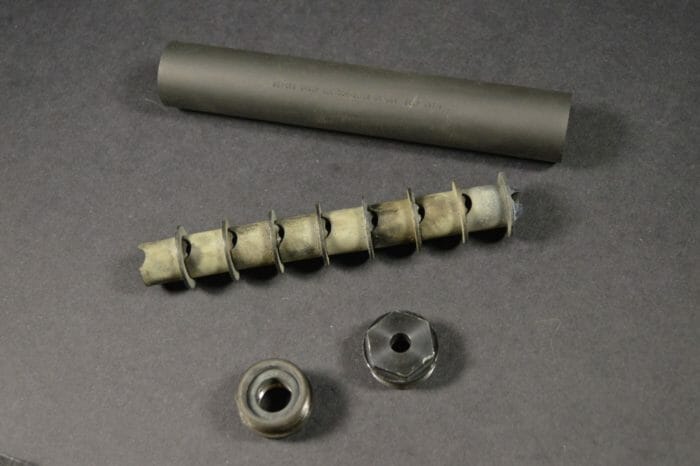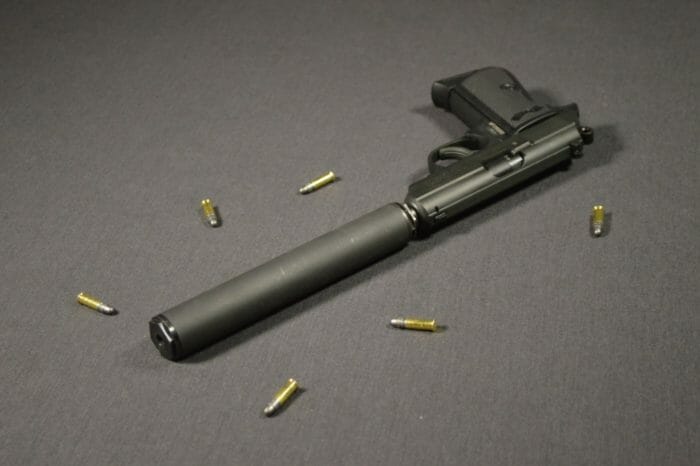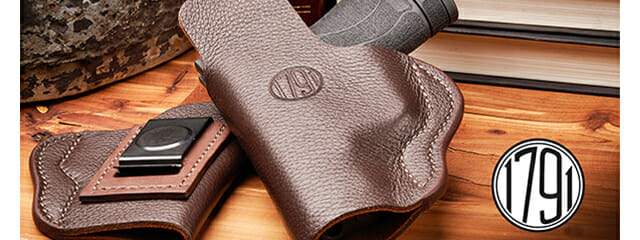Silencer Shop Authority: Bowers USS 22 Review
Back in November, Silencer Shop and Bowers Group paired up to offer me a go with some of Bowers’ popular big bore rifle suppressors. Though it was my first exposure to large bore suppression, I was extremely impressed with the performance of the VERS 458 and 50 silencers, especially when paired with specialty subsonic loads. The experience left me eager to learn more about Bowers and their line of suppressors, so I hit up the guys at Silencer Shop to schedule a date with Bowers’ rugged USS (User Serviceable Suppressor) in .22 caliber.
Size and Weight
In rimfire terms, the USS is a large suppressor. At 6 1/2 inches in length, Bowers’ design is fairly long, but not necessarily unreasonable compared to other large .22 silencers. The added length maximizes suppression and helps to explain why it is one of the quietest 22 silencers on the market.
The example provided to me by Silencer Shop weighs in at 7 ounces with the ATAS thread insert. By itself, the silencer weighs around 6.5 ounces, which is the same weight as most of the offerings on the market. While some silencers are lighter, they typically are not rated for the calibers the same Bowers USS is rated for. As I indicated previously, the USS is constructed entirely of stainless steel, with the exception being the aluminum end cap.
Mounts
One thing Bowers Group is known for is its borderline absurd variety of high-quality threaded mounting options. For the USS, Bowers opted to use their ATAS insert system to adapt the can to a wide range of host weapons. My test silencer came with the standard 1/2×28 threaded insert, which works well with my Walther PPK/S .22 and SIG 522. I have noticed that the ATAS threads are on the small side of the spec range as the adapter is very tight on both of my test firearms, which is a good thing. The insert mates so tightly with my PPK/S that the suppressor tube tends to unscrew from the ATAS, rather than the ATAS unscrewing from the firearm. This is not necessarily a problem as the silencer certainly won’t come loose during shooting, but anti-seize might be a wise option for shooters who run into similar difficulties. The included wrench makes removing the mount easy if you can’t do it by hand.
As mentioned, ATAS inserts are available in a wide variety of thread pitches for use with numerous firearms. However, not all adapters will be caliber suitable for the USS; Bowers’ ASP .45 also uses the ATAS system. Interestingly, Bowers offers inserts that attach directly to popular rimfire pistols like the Walther P22 (and all other Walther rimfire pistols), SIG Mosquito, and GSG 1911, forgoing the need for an additional threaded adapter.
Design and Materials
The USS features a black oxide finish and is also makes the USS one of the most durable cans in its class. Rated for projectiles up to 2400 feet per second, the USS should be expected to laugh off even the saltiest 5.7x28mm loads and has even been approved for use with .17 WSM. It is full-auto rated for 22lr officially, but several users equip their post sample PS90’s with the USS and rip off full-auto 5.7FN.
Inside the tube, the USS features eight Omega-style baffles and a spacer for the blast chamber. Omega baffles typically offer performance similar to, or better than K-baffles, depending on the execution. The blast surface of each USS baffle is a mostly flat face with a small, raised, and ported cone in the center. As is the case with other ported baffles, these mouse holes help to create turbulence and trap gasses in the suppressor. Behind the blast face of each baffle is a ported, cylindrical skirt. Like K-baffle designs, the skirts on the USS’s baffles help to trap gasses near the outer wall of the silencer and impede gas movement back towards the bore line. Bowers’ design looks sound, and an eight baffle stack is substantial for rimfire applications. I will touch more on the baffles’ performance later in the Range Report.
Disassembly of the USS is very straightforward. Both end caps easily unscrew from the suppressor’s tube using standard 13/16” or adjustable wrenches. With both caps off, the baffle stack can be pushed out the end of the silencer for cleaning. The baffles do not lock together, and unless the suppressor is very dirty, they should break apart relatively easily. I have found that lead and carbon fouling can substantially challenge disassembly. Prospective USS buyers and current owners should take care to clean the baffles and tube after most range sessions to prevent the silencer from freezing solid.
Range Report
In terms of suppression, the USS is an excellent performer. According to testing from Silencer Shop, Bowers’ silencer meters at around 112 dB left of the muzzle. As far as .22 silencers go, the USS is among the quietest if not the quietest. My range time with the suppressor verified Silencer Shop’s numbers, and the USS was indeed the quietest silencer of the day, edging out the AAC Aviator 2 for the honors. In the videos below, you will notice that the Aguila standard velocity ammunition I used for testing tended to go supersonic when used with the SIG 522.
Thanks to its baffle design, the USS does not suffer from significant first round pop. Based on my experience, I would estimate that the first round through a cold USS is between 2 and 3 dB louder than subsequent shots. In practicality, this means that the louder first round through an oxygen-filled USS is just barely noticeable.
Point of impact shift is usually fairly minimal when using quality rimfire suppressors. That said, it is almost always present to some degree. My testing showed that the USS imparted less than 1 MOA of shift (to the left in my case) when mounted on my SIG 522. For reference, this is less than the shift I notice when switching between ammunition types and should be considered negligible for all practical purposes.
Conclusion
Bowers’ USS may not be the flashiest can or most interesting design on the market, but it is undeniably an excellent performer. The USS is possibly the quietest silencer I’ve tested and is certainly the toughest .22 suppressor I’ve ever seen. I cannot think of a better option for 5.7x28mm guns like the PS90 and the Five-seveN.
At around $495 from your local Powered by Silencer Shop dealer, the USS is one of the pricier .22 suppressors available. Even so, shooters looking for the best blend of durability and suppression are likely to find the USS to be worth the going rate.
An information security professional by day and gun blogger by night, Nathan started his firearms journey at 16 years old as a collector of C&R rifles. These days, you’re likely to find him shooting something a bit more modern – and usually equipped with a suppressor – but his passion for firearms with military heritage has never waned. Over the last five years, Nathan has written about a variety of firearms topics, including Second Amendment politics and gun and gear reviews. When he isn’t shooting or writing, Nathan nerds out over computers, 3D printing, and Star Wars.

